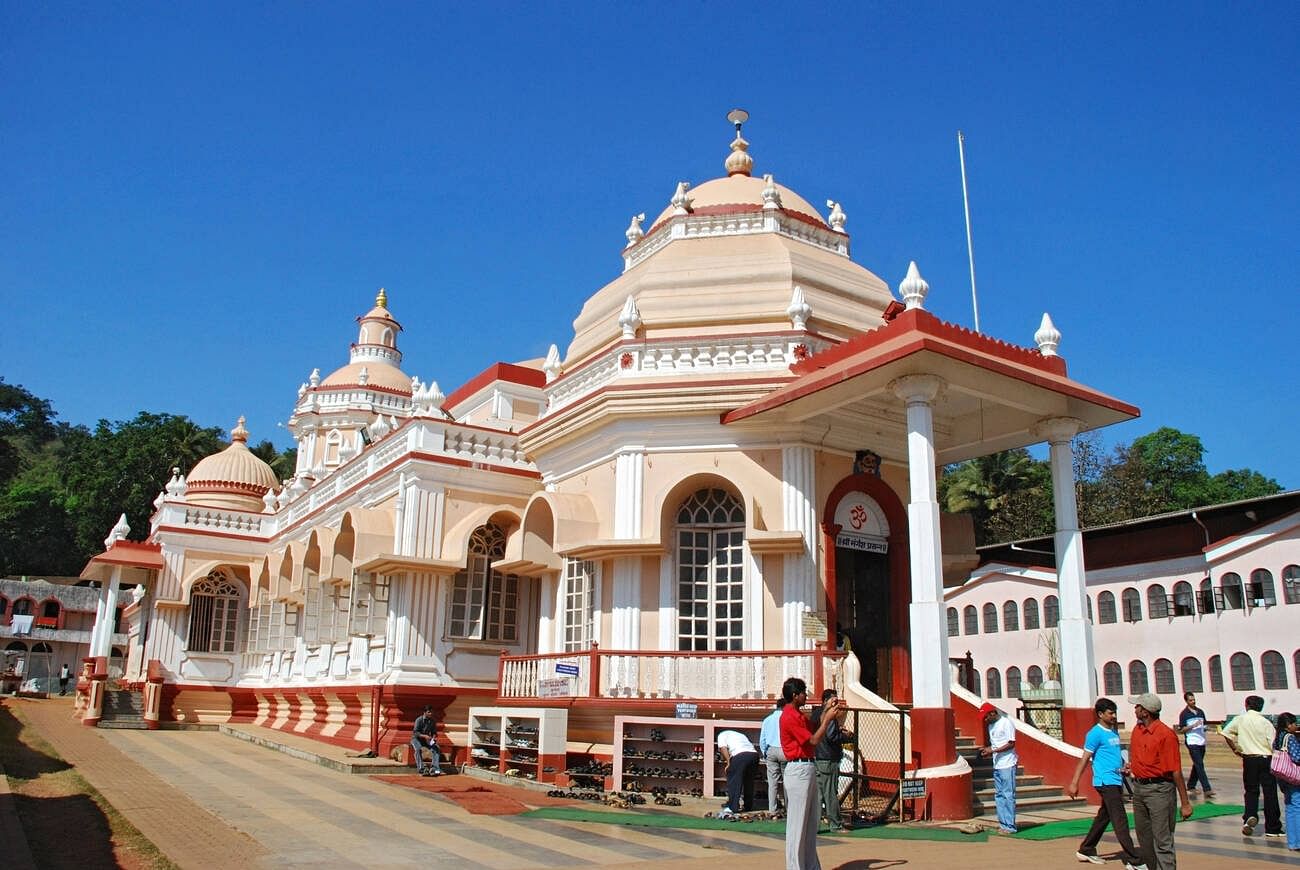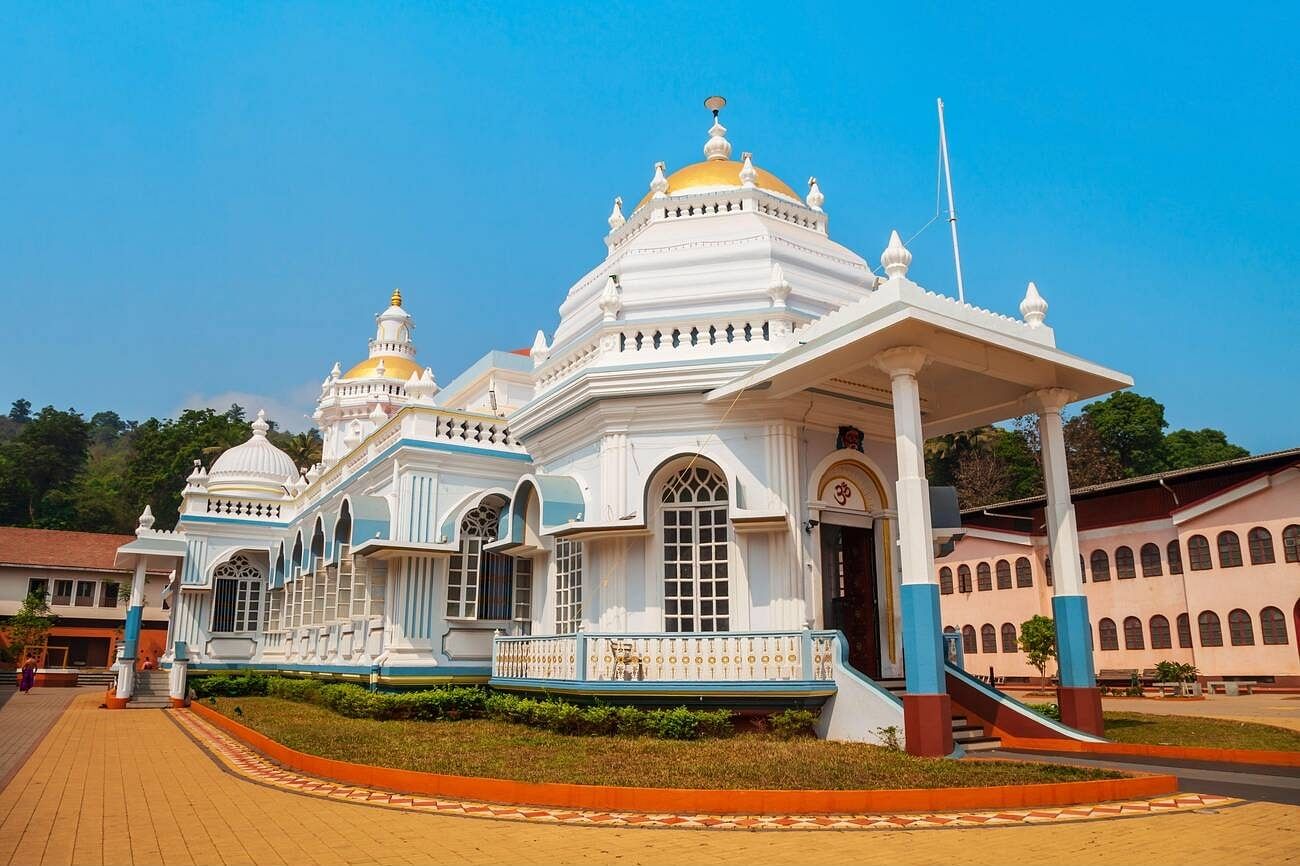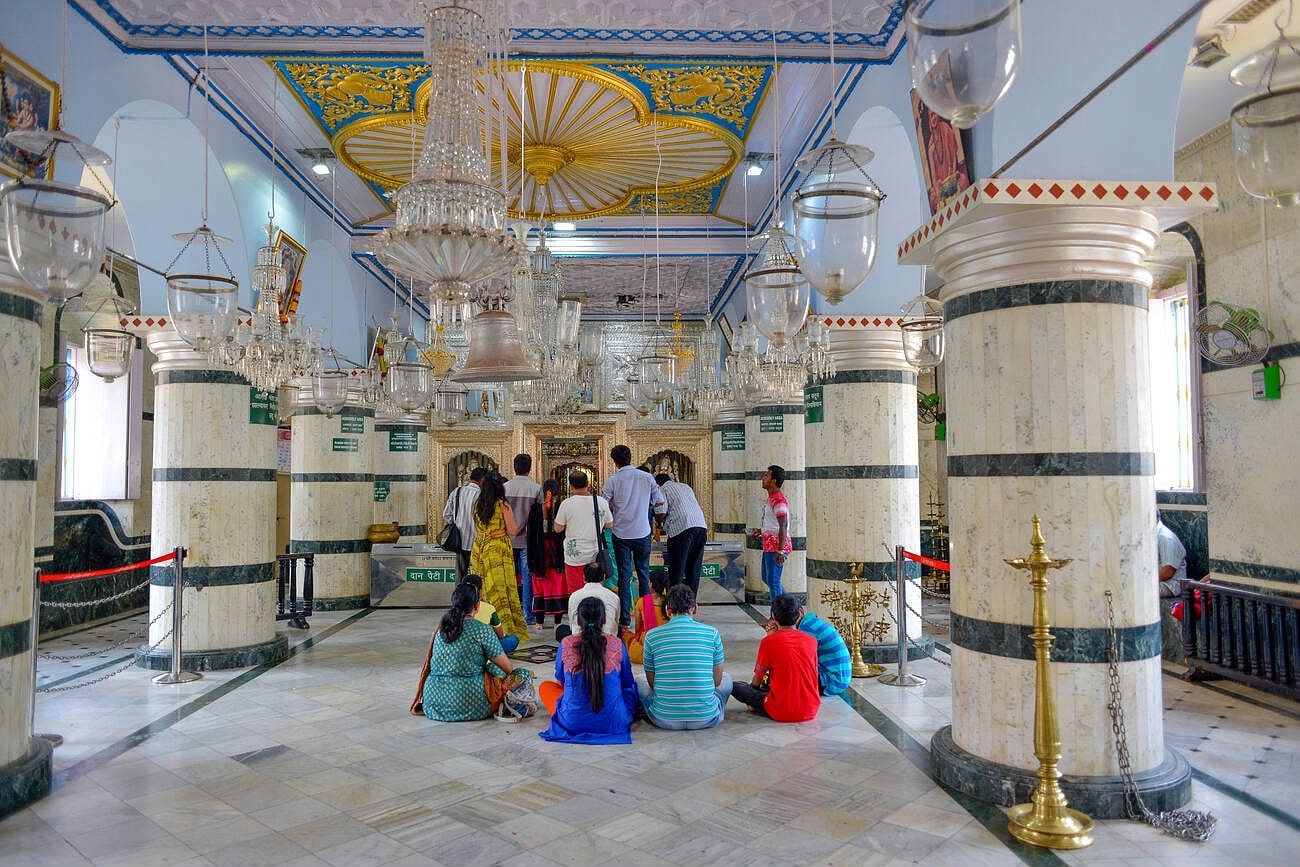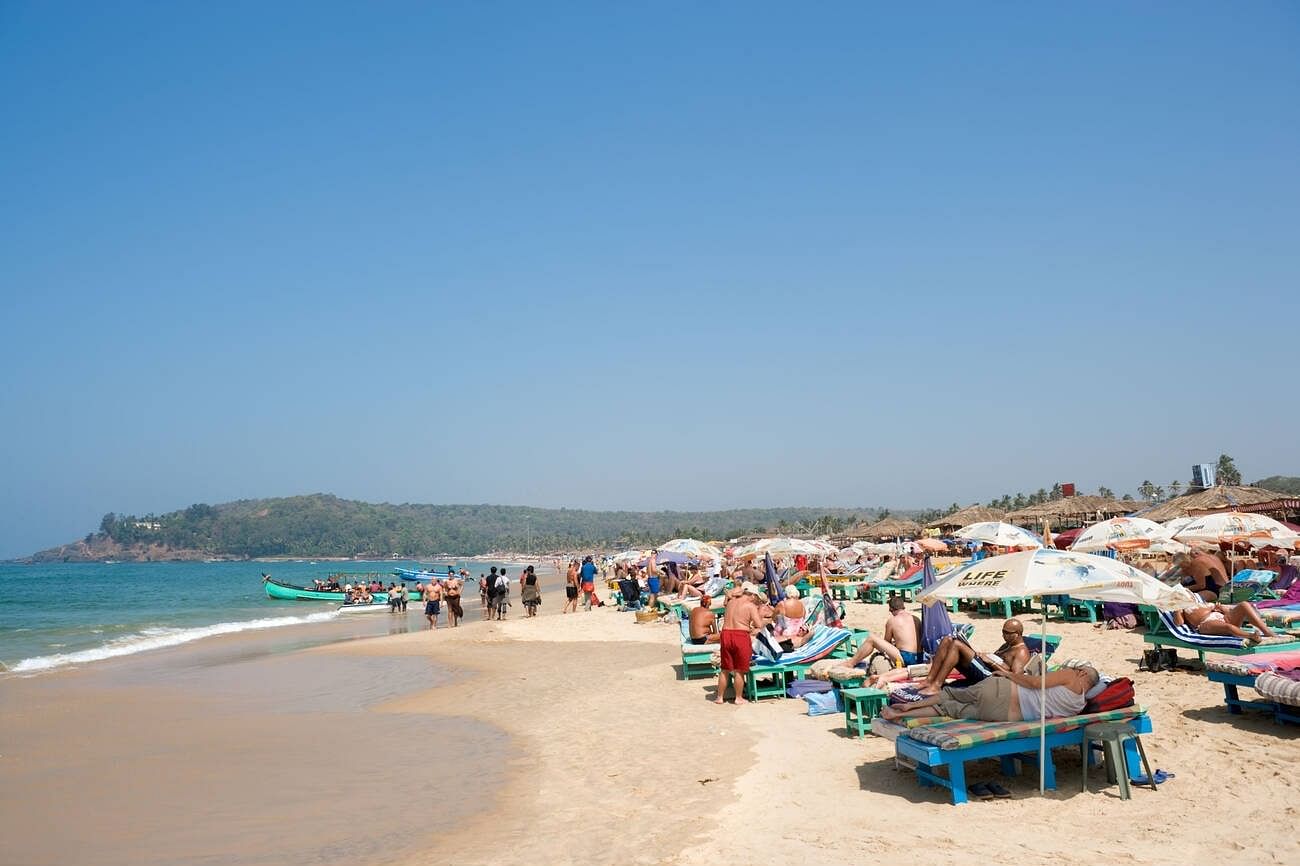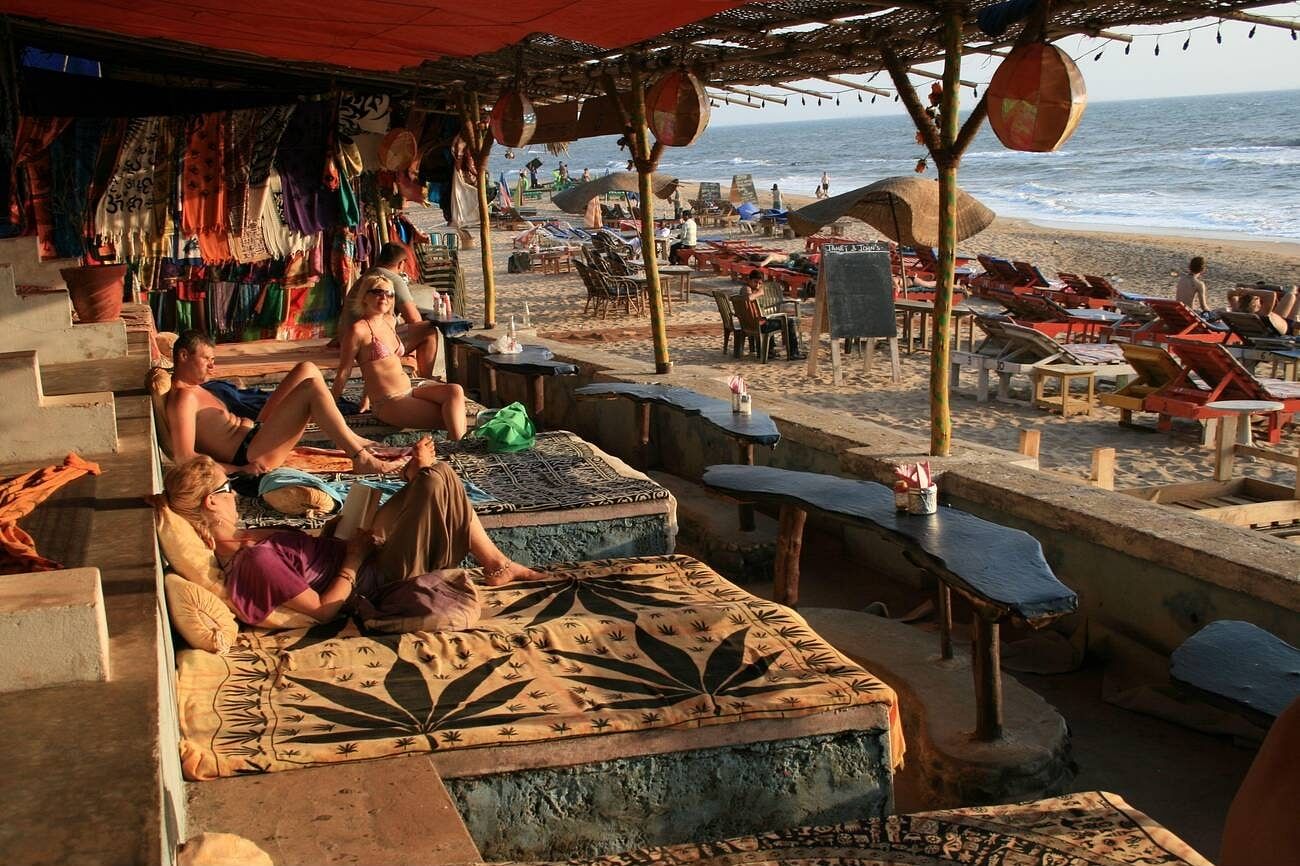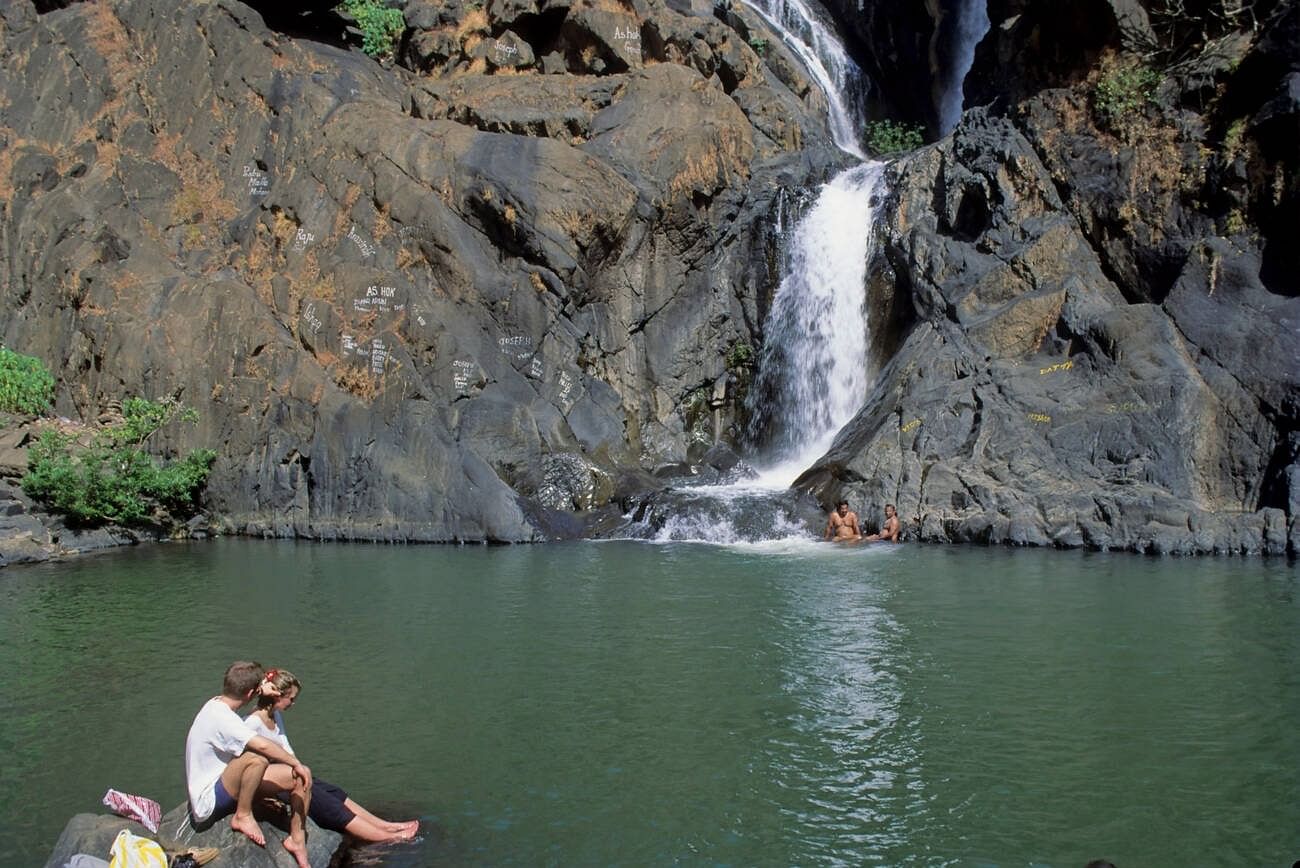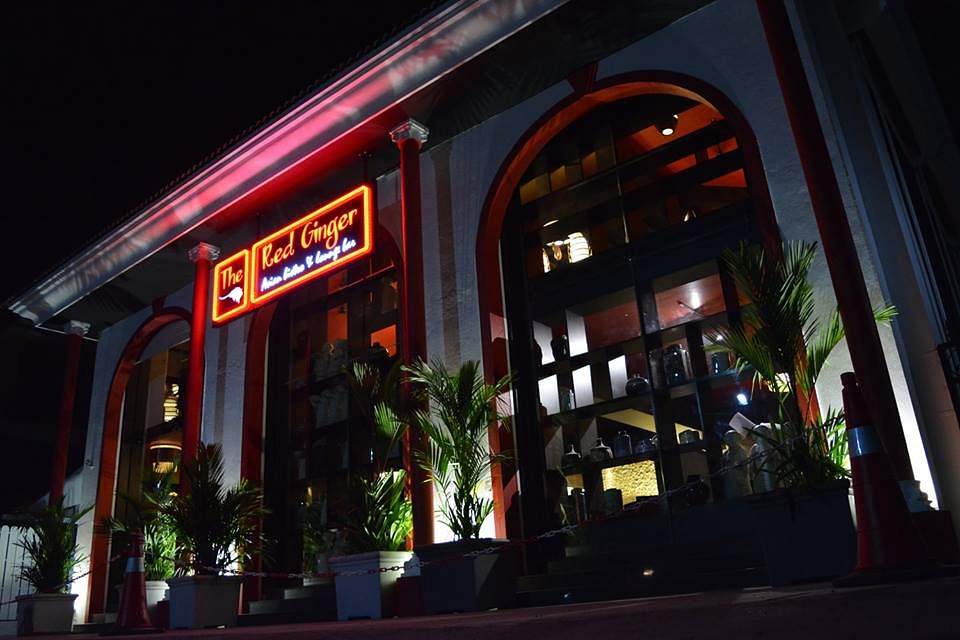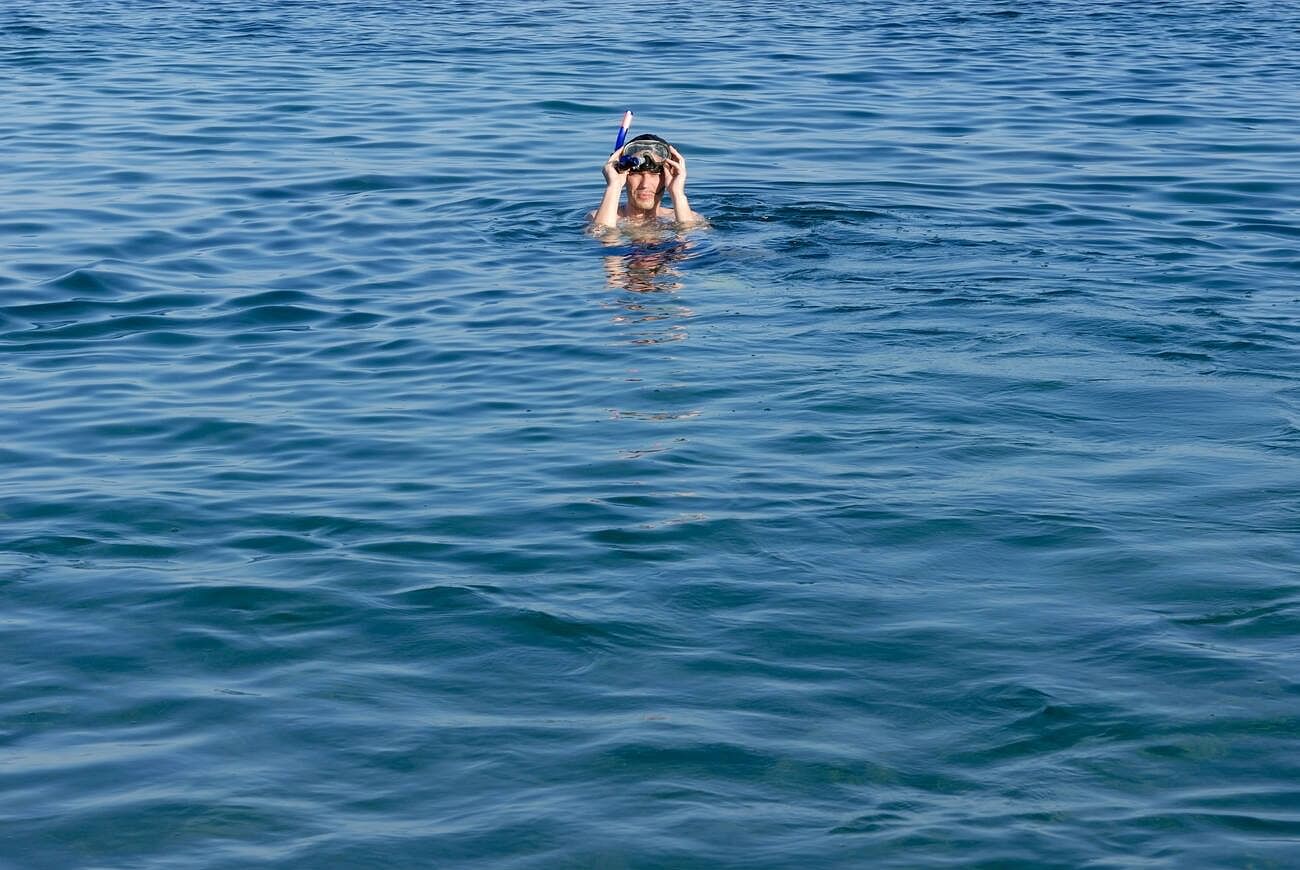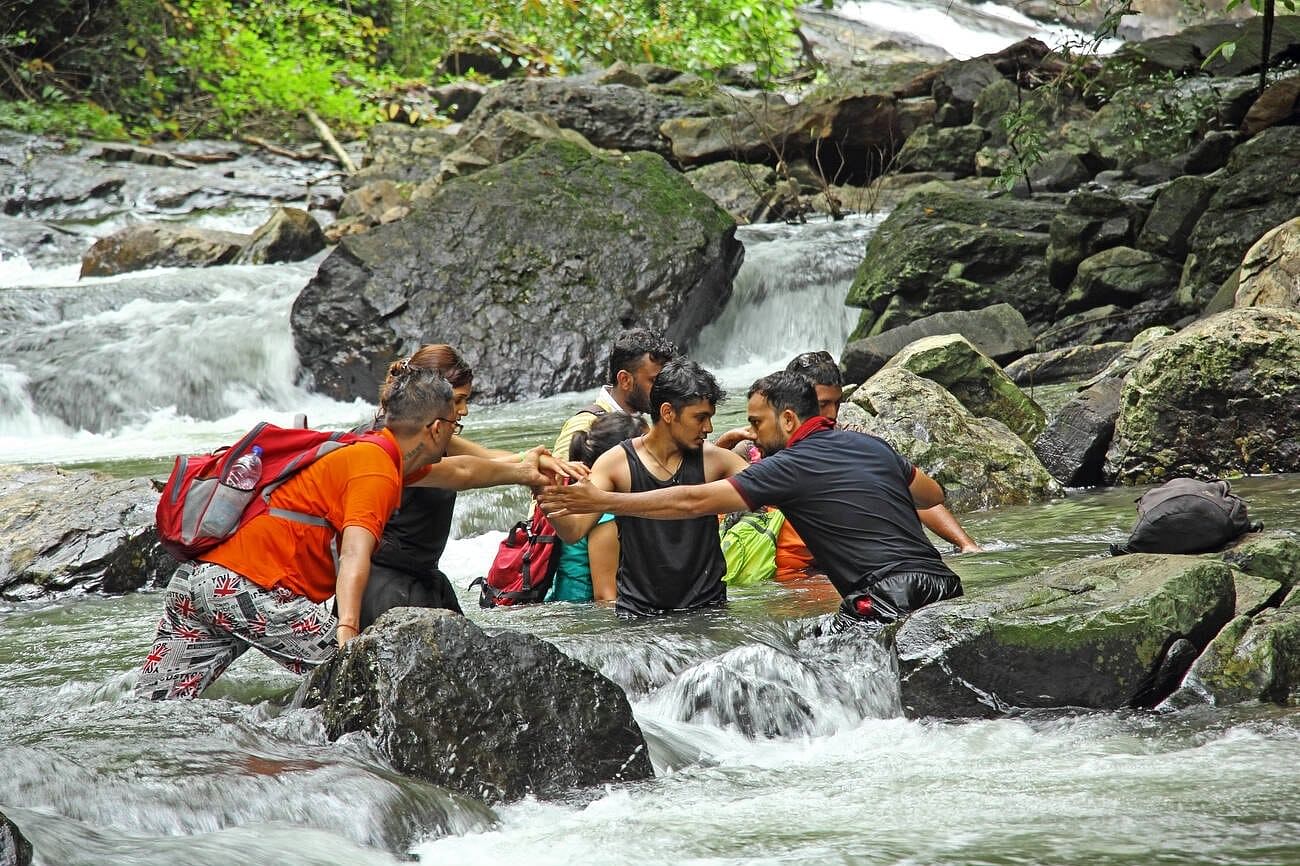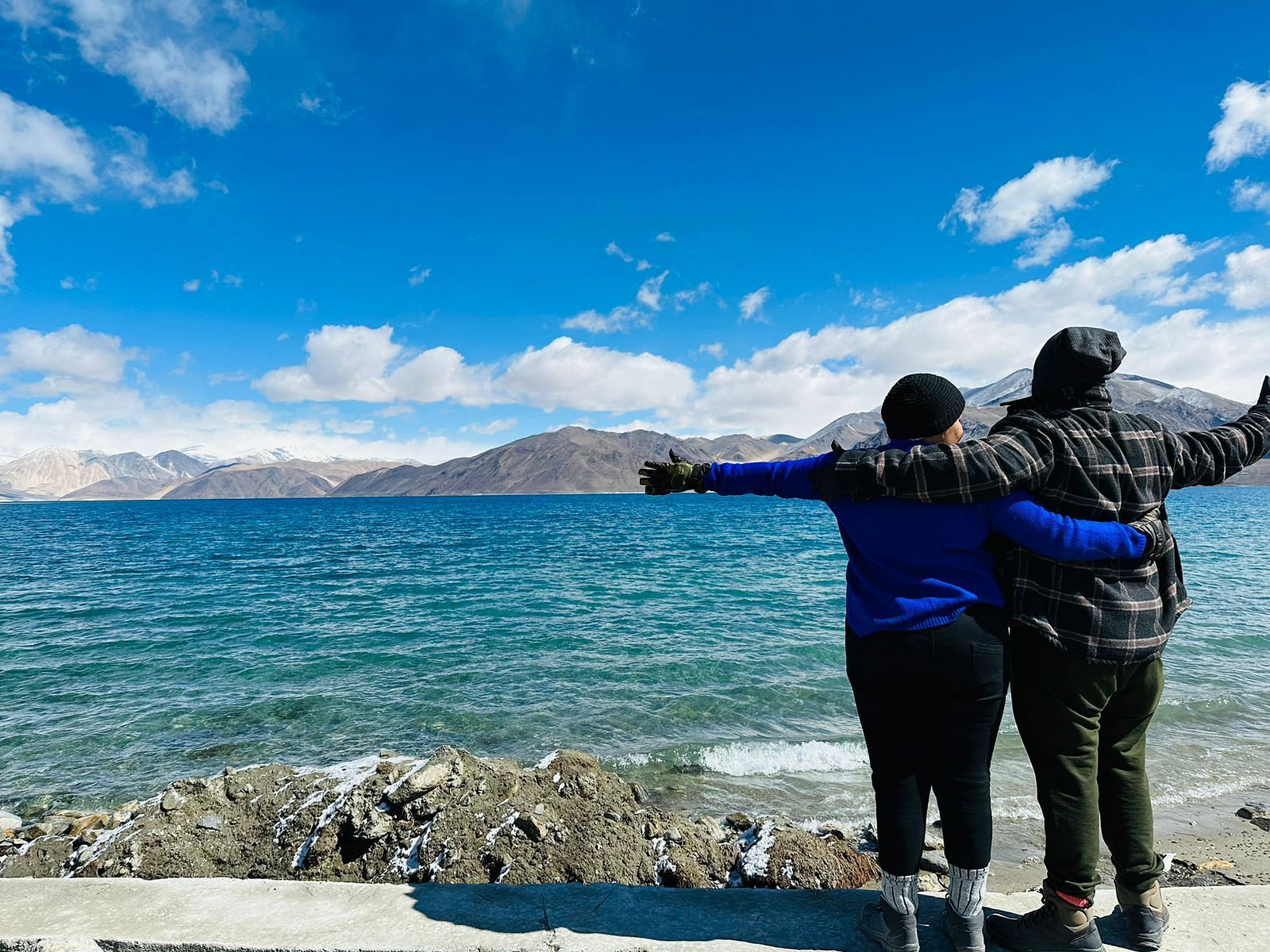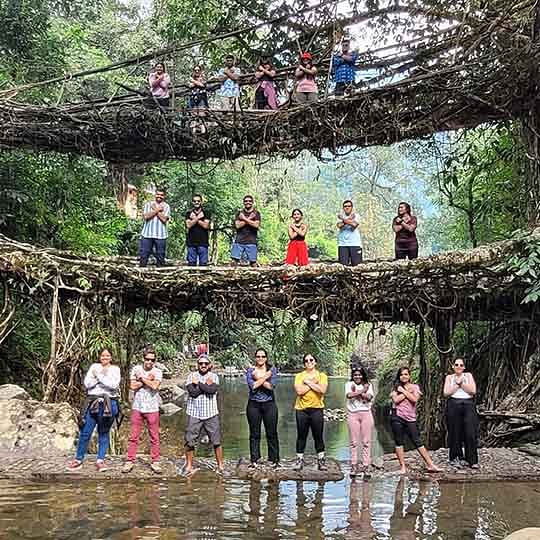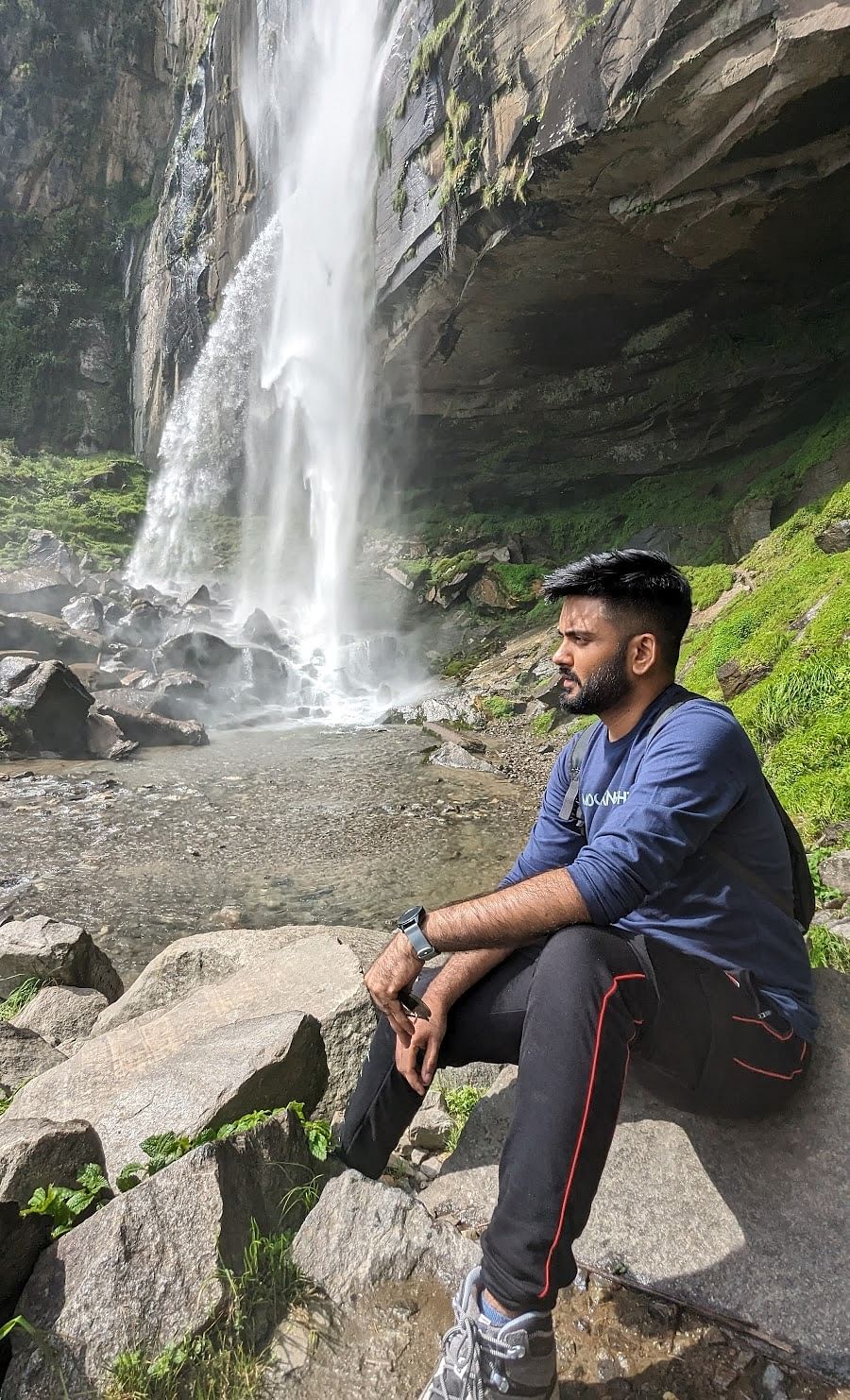The Mangeshi Temple in Goa is one of the best places to visit in Goa and a worthy pilgrimage site considered for its grand architecture. Visitors can enjoy Hindu rituals and ceremonies, gaining insight into Goa’s spiritual historical past and its harmony with Lord Shiva and Lord Vishnu.Mangeshi Temple in Goa is a place to explore the spiritual aspect of Goa. The Sri Mahadeva Temple, Tambdi Surla, is one of Goa’s geriatric temples devoted to Lord Shiva, with a Shiva Linga and a sculpture of a headless Nandi. Citizens believe that a massive king cobra is living near the Shiva Linga, making it a thrilling region to visit in Goa for those who love pilgrimages.
Shri Mangeshi Temple is situated within the Ponda Taluka at a place called Priol and home to the divinity Lord Mangeshi, a manifestation of Lord Shiva the Hindu God of Destruction. Lord Mangeshi is specified as Lord Shiva in the provinces of Goa. The distance of the Mangeshi temple from Panaji the capital of Goa is 22 km.
In line with mythological tales, it’s said that Lord Shiva had once visited the land distraught after dropping close to his spouse Parvati at a sport of dice. As Goddess Parvati came seeking him, he tried to prank her by taking the body of a tiger, trying to frighten her. Seeing the predator in front of her, Parvati cried out and prayed uttering the subsequent phrase Trahi Mam Grisha, kind of translated this means “O Lord of the Mountains, save me”. Upon listening to her request Shiva reverted to his regular shape and went back to Kailash together with her.
The place in Goa in which all of this passed off changed later marked by the production of a temple, committed to Lord Mangiesh.
History Of Mangeshi Temple In Goa
The history of Mangeshi temple in Goa is powerful in the context of the Portuguese incursion as that is one of the temples that had been destroyed by the invaders in 1567. The Portuguese destroyed this temple while the Salcate counted to their territory. This historic temple was located within the village of Kushastali on the south monetary institution of the river Zuari, the village was later called as Cortalim after the Portuguese conquests.The Portuguese had destroyed the original temple to affirm a church on the same ground, but the lingam of Lord Mangiesh was straight away transferred to Priol where it is currently placed. Kushastali throughout the Portuguese reign proved to be a terminal within the ferry route across the river Zuari.
After the shifting, the deity snuggled amidst the palm groves in the valley and stayed there for almost 4 centuries. Later at some point in the mid-18th century, Ramchandra Sukhtankar a fantastic trend of the Maratha Court restored the lingam and convinced Raja Sonda to donate the land for building the temple and additionally provide finances for its protection. The property of Priol could not prevent the protection and reconstruction of the temple structure normally since the 18th century, due to the big endowments of Raja Sonda who surrendered Ponda to the Portuguese.
Architecture Of Mangeshi Temple In Goa
The temple’s architecture is a captivating combination of Hindu and Goan impacts, showcasing a unique style that echoes the region’s rich cultural heritage. The temple’s most significant part stands tall with its extraordinary white facade, decorated with difficult carvings, colourful frescoes, and beautiful sculptures, showcasing the bygone era’s craftsmanship. The highlight of the Mangeshi Temple is the staggering seven-tale deepstambha also called the lamp tower, which signifies the temple’s grandeur. This towering structure, decorated with elaborate carvings and fragile designs, is a sight to behold, in particular, whilst illuminated throughout spiritual galas and celebrations. As you step inside the temple’s internal sanctum, a feeling of spirituality and dedication surrounds you.
The predominant deity, Lord Mangiesh means Lord Shiva, is consecrated within the sacred shrine sanctorum. The icon of the lord is superbly embellished with traditional clothes and jewellery, and devotees provide their prayers and are looking for blessings in this religious location. The Mangeshi Temple draws a constant movement of devotees and tourists annually.
However, the temple genuinely becomes active at some point in festivals, especially the elegant Shivaratri celebrations. The air is packed with the sounds of devotional chants, the aura of incense, and the sight of colourful pageants as devotees gather to pay tribute to Lord Mangeshi.
The Mangeshi Temple holds a unique place inside the hearts of the people as a symbol of their cultural heritage. The temple’s records date back to the sixteenth century whilst it changed while relocating from Cortalim to its current location in Mangeshi. Over the centuries, the temple has defied the test of time, glimpsing the rise and drop of empires, however staying a religious beacon for ages.
Places To Visit Near Mangeshi Temple
Embracing the active vibes of Baga Beach, visitors can relinquish inside the allure of seaside shacks, dance floors, and a collection of water sports. The friendly and welcoming surroundings of the seashore make it a really perfect vacation spot for special events, combining beachside leisure with thrilling water experiences. Baga Beach’s vibrant flea market adds to the appeal, developing a super combination of enjoyment and pleasure, making it one of the pinnacle places to visit in Goa.
Another famous vacation spot that must be on your list of places to visit in Goa is Colva Beach. Famous for its comprehensive beachfront, powdery white sand, swinging coconut trees, and colva beach, it’s miles located 33 kilometres away from the Panjim Kadamba Bus Stand and is at a distance of 8 kilometres from the Margao Railway Station. It is one of the pleasant places to visit near Mangeshi Temple.You can glimpse ancient ruins of Portuguese homes and villas, small shacks, and shops near the railway station. With its picturesque surroundings and energetic environment, Colva Beach is another must-visit spot in Goa that should no longer be missed!
Snuggled within the vibrant coastal vicinity, Anjuna Beach is one of the quality locations to visit in Goa and a true hippie’s paradise, imparting a great combination of beachside rest and bustling flea markets, making it one of the delightful summer holiday destinations in the world. It’s the ideal area to relax and immerse yourself in the laid-back vibes, with chances for beachside sports, vibrant flea markets, and lurching coconut trees. It is one of the best places to visit near Mangeshi Temple.Anjuna Beach is renowned for its charming seashore huts, enthusiastic dance flooring, and a big section of water sports, making it a sanctuary for journey seekers and peace enthusiasts alike. Visitors can encounter the bohemian appeal of this seashore, identified for its detailed fusion of tranquil relaxation and attractive beachside sports.
Anjuna Beach is certainly an ideal place to build special memories, indulge in delicious cuisine, and enjoy the soothing environment by the sea.
Dudhsagar Waterfalls is a 4 tiered waterfall located on the Mandovi River in Goa. This waterfall is amongst India’s tallest waterfalls with a peak of 1017 feet. This fall is placed in the Bhagwan Mahavir Sanctuary, at the border between Karnataka and Goa states.Dudhsagar actually means a Sea of Milk in the nearby Konkani language and gets its term as it appears like an overflowing sea of milk. It is a four-tiered waterfall with extraordinary approaches to attain each stage. The bottom of the waterfall is available through the Bhagwan Mahavir Wildlife Sanctuary. It is one of the amazing places to visit near Mangeshi Temple.
The waterfall is also known as Vajra Sakala Falls by means of the locals but most humans realize it as Tambdi Surla Falls based totally on the popular hiking path to the waterfall which starts from Tambdi Surla Mahadev Temple. According to legend, the waterfall was as soon as the residence of a beautiful princess.
The princess used to drink sweetened milk from a golden jug after she took a bath. One day, she spotted a prince watching her at the same time as she drank the milk. She poured the milk to shape a curtain to cover her modesty. Hiking to the waterfall is also a famous activity. The most adventurous course is to trek from Kuveshi village. It isn’t always allowed at some point of monsoon because it requires crossing the Mandovi River.
The Mangeshi Temple, devoted to Lord Shiva, is located inside the village of Mangeshi in Ponda Taluka, Goa. The Mangeshi Temple Timings are 6:00 am to 10:00 pm. To ensure a memorable visit to the Mangeshi Temple, it’s important to keep in mind the situation of the weather and the multiple cultural activities associated with the temple at some stage in the year. The climate in Goa can be categorized into three seasons. the winter season, the summer season, and the monsoon season. Winter Season (November to February): The best season is the wintry climate months in Goa, especially from November to February. During this time, the climate is delightful, with temperatures ranging between 20°C and 30°C. The cool breeze and clear atmosphere create an idyllic environment for exploring the Mangeshi Temple. Additionally, gala’s like Diwali and Christmas are glorified with wonderful pomp and display in Goa, adding a festive spirit to your visit.
Summer Season (March to May): The summer time in Goa, from March to May, experiences an upward thrust in temperatures, with averages starting from 25°C to 35°C. While the weather can be hot and humid, this period sees infrequent crowds, permitting you to explore the temple grounds easily.
Monsoon Season (June to September): The monsoon season in Goa, from June to September, brings heavy rainfall to the vicinity. While the lush green surroundings and decreased visitor activity provide a unique attraction, it’s important to be aware that the temple may be crowded all through neighbourhood festivals like Shigmo and Ganesh Chaturthi.
The rainfall during this time can also avoid outdoor activities. However, journeying the temple at some stage in the monsoon can be a beautiful experience while watching the serene ambience of rain-washed landscaping.
The best time to visit Mangeshi Temple in Goa depends on your preferences. The winter season is good if you want to experience pleasant weather, vibrant festivals, and active surroundings.
For the ones looking for a calm visit with fewer crowds, the summertime can provide a more intimate enjoyment. Alternatively, if you want to witness conventional Goan celebrations, the monsoon season is probably the correct time for you. Now you are thinking about how to reach Mangeshi temple, don’t worry we have got you, all you have to do is to scroll down.
Suggested Read: Best Places For Shopping In Goa
How To Reach Mangeshi Temple
By Road: The temple is located at Mangeshi in Priol Village of Goa’s Ponda taluka. The distance from Panaji to Mangeshi is 20 km and alongside the same path, it’s 10 km away to Ponda. Many inter-state government-run and privately operated buses travel through Mardol.By Rail: The nearest railway station is Karmali or Old Goa, on the Konkan Railway, from which you can take a bus or a cab to Mardol, the other stations in Goa are Madgaon, Panaji, Vasco Da Gama and Sanvordem.
By Air: The airport is located at Dabolim, which is 30 km from Panaji.
Restaurants Near Mangeshi Temple
Here is a list of the top 3 restaurants near Mangeshi Temple:Teresa Beach House- By Sly Granny
This is one of the best restaurants near Mangeshi Temple, this place is known for its fresh air, delightful view and aura of peace.
The Red Ginger
This is one of the must-visit Restaurants near Mangeshi Temple, which has a 4.3-star rating the moment you step inside you will feel a vintage sense. The popular dishes are Sushi, Dumplings, Noodles and cocktails.
Ritz Classic
Ritz Classic is another best restaurants near Mangeshi Temple offers ample seating areas, and they serve continental and Asian foods including delightful desserts. It is one of the best places to eat in Goa.
Hotels Near Mangeshi Temple
Here is a list of the top 3 hotels near Mangeshi Temple:Taj Exotica Resort
This is a beachfront hotel near Mangeshi Temple, that offers family-friendly facilities with popular amenities: Pet friendly, has spa availability, a pool, a gym, and business services, with all these facilities you feel luxurious here.
Grand Hyatt Goa
This is one of the luxurious hotels near Mangeshi Temple, you can have direct access to the beach, here people speak 3 languages English, Hindi and Portuguese, if you are looking for a royal hotel then this is the perfect place to check in.
Silva Heritage Goa
This is one of the best affordable hotels near Mangeshi Temple, where you have a regal experience that too at a budget-friendly cost, which can’t be missed.
Things To Do In Mangeshi Temple
1. Scuba Diving and Snorkeling
Explore the aquatic world of Goa by undertaking scuba diving and snorkelling expeditions. Plunge into the depths of the Arabian Sea and glimpse the colourful marine lifestyles, coral reefs, and shipwrecks. Professional instructors assure your protection and guide you through an unforgettable experience. Don’t pass over the opportunity to capture breathtaking moments and create memories to close a lifetime. This is one of the amazing things to do in Goa.
Goa’s lush green landscapes and picturesque hills provide first-class opportunities for trekking and hiking fanatics. Undertake on interesting paths by thick forests, cascading waterfalls, and captivating villages. Some famous hiking routes include Dudhsagar Fall, Fort Aguadak, and the Tambdi Surla. 3. Zip Lining and High Rope Courses
Zip lining and high rope courses are excellent for the ones looking for an adrenaline rush amidst nature. Strap in your harness, drift through the treetops and witness dazzling scenic views of Goa’s scenic splendour. Test your agility and stability as you steer tough obstacles, rope bridges, and swinging logs. It’s an experience that will push your limits and leave you with a sense of achievement. This is one of the adrenaline-rush things to do in Mangeshi Temple.




